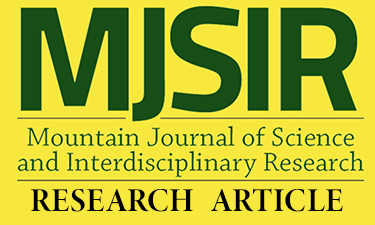Ensuring Intergenerational Ties: Digitizing Pidlisan Folktales to Multimedia Based Learning System (MBLS) Applying Tradigital Pedagogy
Main Article Content
Abstract
Digitizing folktales of the indigenous peoples into Multimedia Based Learning System (MBLS) anchored in tradigital pedagogy can foster enhanced memory retention, improved values formation, increased socio-cultural awareness, and strengthened intergenerational tie among the young. Using Cybernetic Tradition of Communication and Participatory Communication Approach (PCA), the study transformed a folktale into an interactive and engaging pedagogical learning material developing a MBLS board game and a courseware. The study digitized one of the oral narratives of the Pidlisan Indigenous Peoples Organizaton in Sagada, Mountain Province - the one titled, “Ang Pinagmulan ng Fidelisan (The Origin of Fidelisan)” which reflects the Indigenous Knowledge Systems (IKS) of the tribe. Through PCA, the MBLS was named “Pidlisan: A Cultural Quest.” The MBLS development underwent the processes of production, implementation, and evaluation. Under the production phase, the research was able to produce a culturally rooted board game, playing cards, a PowerPoint Presentation, and a courseware to complete the MBLS. The MBLS was implemented and evaluated from Pidlisan schools namely the Aguid Elementary School (AES), Bangaan Elementary School (BES), and Fidelisan Elementary School (FES). The MBLS exhibited an effective transmission of indigenous knowledge, values, and practices through tradigitalism as manifested in the pathway of intergenerational ties. The MBLS, an alternative platform for learning folktales in particular and culture in general, creates an interactive and engaging venue for education and social consciousness. Furthermore, the cybernetic lens employing the Shannon and Weaver’s Mathematical Communication Model was used to analyze the systems and units in the tradigitalism framework of the study. It revealed that intergenerational ties may be enacted and manifested if the communication system is properly implemented. The study also encourages yPidlisan to continue living their traditional culture to facilitate more efficient transmission of culture among the younger generation with the aid of appropriate and modern strategies.
Article Details
References
Alsadhan, A.O., Alhomod, S., & Shafi, M.M. (2014). Multimedia Based E-learning: Design and Integration of Multimedia Content in E-learning. Retrieved on October 11, 2018 from http://journals.sfu.ca/onlinejour/index.php/i-jet/article/viewFile/3308/3146
Andresen, B., & Brink, K. (2001). Multimedia in Education Curriculum. Retrieved on October 11, 2018 from https://iite.unesco.org/publications/3214723/
Angus, M., Ariese-Vandemeulebroucke, C., Boom, K., & Politopoulos, A. (2017). The Interactive Past: Archeology, Heritage, and Video Games. Sidestone Press. Pp 7-18.
Basiwal, M. (2018). Linnapet: An Intergenerational Tie Factor Between the Young and the Old Among the Agawa Sub-Tribe in Besao, Mountain Province. Undergraduate thesis, Benguet State University, La Trinidad, Benguet.
Buckingham, D., & Scanlon, M. (2005). Selling Learning: Towards a political economy of edutainment media. Media, Culture and Society. Retrieved on November 13, 2018 from https://www.researchgate.net/publication/240933615_S e l l i n g _ L e a r n i n g _ To w a rd s _ a _ Po l i t i c a l _Economy_of_Edutainment_Media/download
Cleary, L.M., & Peacock, T.D. (1998). Collected wisdom: American Indian education. Retrieved on November 7, 2018 from http://www2.humboldt.edu/education/images/uploads/documents/18._Collected_Wisdom_-_American_Indian_Education.pdf
Coulter, C. Michael, C., & Poynor, L. (2007). Storytelling as Pedagogy: An Unexpected Outcome of Narrative Inquiry. Retrieved October 13, 2018 from https://www.ship.edu/contentassets/569211b0c6f243808c3c64f54e816cd2/v4daneshyarp78-p91.pdf
Craig, R.T. (2006). Communication Theory as a Field. Communication Theory 9 (1).
Episcopal Commission on Indigenous People (ECIP). (2006). Indigenous Peoples Education: From Alienation to Rootedness. Pp 113-115.
Issa, R.R.A., Cox, R.F., & Killingsworth, C.F. (1999). Impact of multimedia-based instruction on learning and retention. Journal of Computing in Civil Engineering, 13(4): 281-290.
Mayer, R., & Moreno, R. (2002). Aids to Computer-based Multimedia Learning. In Learning and Instruction, 12:107-119. Retrieved on October 12, 2018.
Mind Research Institute (MRI). (2018). Profiles of success Pickerington Schools. Mind Research Institute. Retrieved on October 8, 2018 from bit.ly/pickeringtonmath
Najjar, L.J. (1996). Multimedia information and learning. In Journal of Educational Multimedia and Hypermedia, 5:129-150.
Norhayati, A.M., & Siew, P.H. (2004). Malaysian Perspective: Designing Interactive Multimedia Learning Environment for Moral Values Education. Educational Technology & Society, 7(4): 143-152.
Okan, Z. (2003). Edutainment: Is learning at risk?, British Journal of Educational Technology, 34(3) : 255-264.
Seymour, B. (2017). Tradigital Learning Plan. Retrieved on November 11, 2019 from https://seymoureducate.files.wordpress.com/2017/06/tradigital-road-map1.pdf
Tufte, T., & Mefalopulos, P. (2009). Participatory Communication: A Practical Guide. The International Bank for Reconstruction and Development/The World Bank. Washington, D.C. Pp. 36-45.
Yamauchi, L.G. (2008). Effects of multimedia instructional material on students' learning andtheir perceptions of the instruction. Retrieved on November 17, 2018 from https://lib.dr.iastate.edu/rtd/15324
Zin, N.A.M., Nasir, Y., & Munirah, G. (2010). Promoting Socio-Cultural Values through Storytelling Using Animation and Game-Based Edutainment Software. Retrieved on November 11, 2018 from http://www.intechopen.com/books/convergence-andhybrid-informationtechnologies/promoting-socio-cultural-values-through-storytelling-using-animation

